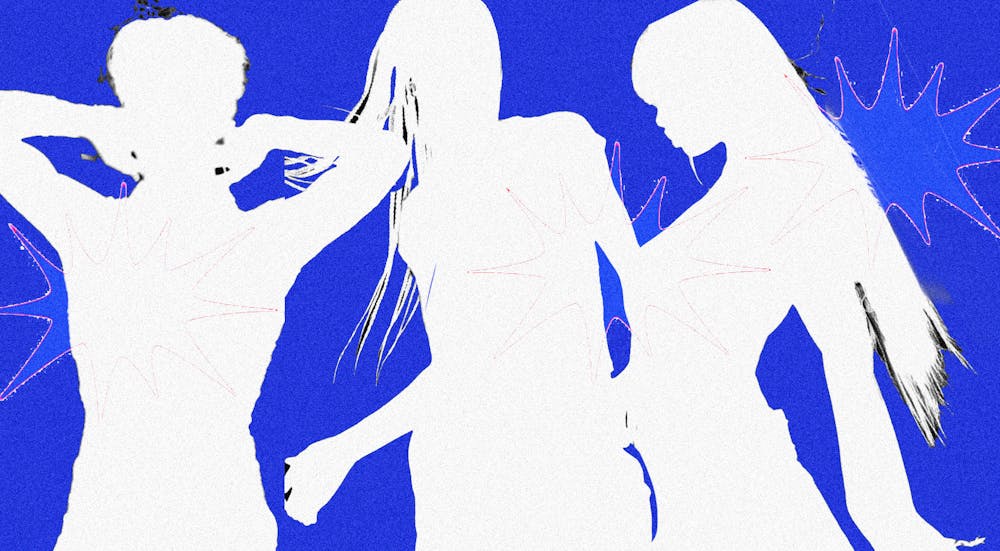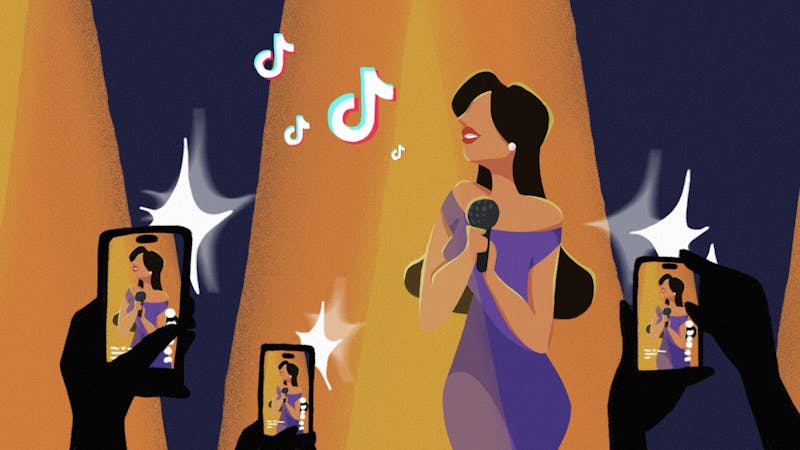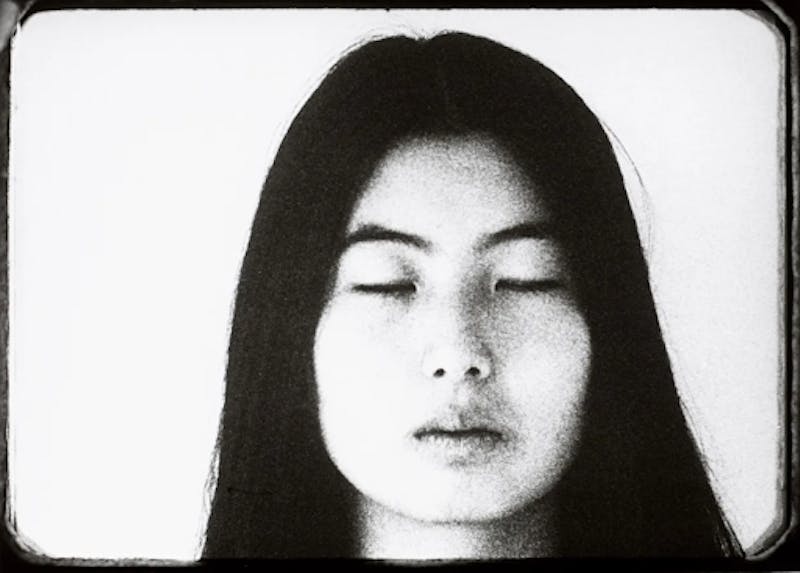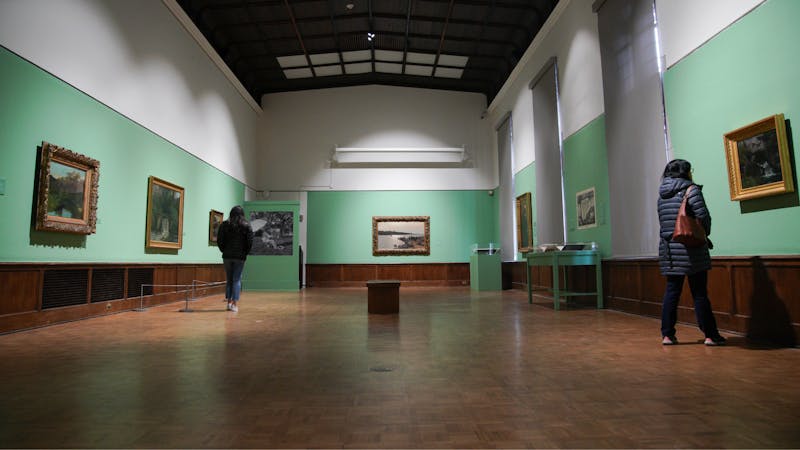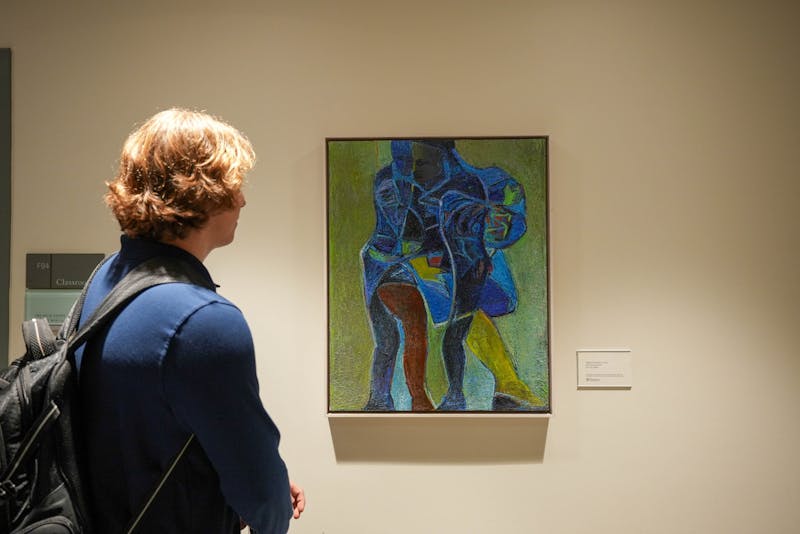We arrive through the woods, following the anemic light of glowsticks scattered along an unmarked trail, vaguely referring to a map we received a few hours ago. As the distant rumbling grows more intense, we begin to feel a pulse in the earth, a change in the air; all trepidation and inhibition dissipate as we are drawn to that thudding siren song.
Others join us along the way, and tentative footsteps become a flow of bodies, directed through a channel carved by countless waves of ravers through the trees and brush. Strobes flicker like shuddering phantoms piercing through the foliage; we catch glimpses of silhouettes caught in motion. We arrive at the clearing and the world opens. Amidst the sudden expanse of space, a few hundred people crowd around a makeshift stage, writhing in an eruption of red light, some twirling kaleidoscopic electric whips, some leaping as though gravity had loosened, some still and overcome, bathing in sound.
They are here to reenact an old ritual that many thought was lost to history. Since the rave culture of the 1990s became the target of state crackdowns amidst moral panic and reaction, the electronic dance music that was once distinct to these clandestine gatherings has been largely dragged indoors into licensed clubs, which have shed the rave’s purported radical orientation and utopian ethos in favor of a commercial, carnivalesque space of highly controlled, officially sanctioned excess.
What was once the sound of autonomy, of a space beyond and opposed to a crushing dominant culture, has been folded into the logic of our time, a release valve for the stresses and sensuality–starved frustration of contemporary life. Whole genres of music, like the sample–heavy, distorted, elegiac, electronic "hauntology" of the early 2000s, exemplified by the artist Burial, emerged from mourning for the decaying memory of the rave space, articulating the long comedown from that ecstatic, prelapsarian ideal. The culture of EDM, like so many countercultures before it, was hollowed out, privatized, and sold back to the generation it was stolen from, shorn of its radical edges.
Now, however, the underground seems to be reawakening. What are we to make of today’s rave renaissance? What draws people in Philadelphia to follow the hints of a cryptic flyer taped to a lamppost and wander under a crumbling bridge or through moonlit woods in search of some spark of that original light? And does any residue of the radical, communal project of the rave remain in today’s unofficial dance parties?
One attendee, who gave their name as "Thirteen," succinctly summarized the drive which had brought them into the woods that night: “to reach altered states.” While we might narrowly interpret this to refer to substance–induced insights, Thirteen seemed more enamored of the other features of the space.
Unlike in a cramped basement, everyone in the clearing chose closeness. The physical proximity of body to body, Thirteen pointed out, was an active decision rather than a necessity. Their enthusiasm also was derived from the rave’s autonomy from the profitable, alcohol–fueled logic of nightclubs: Everyone from the organizers to the participants was invested in the creation of a shared experience—the event did not exist to line the pockets of some distant landlord.
Thirteen had just moved to Philly from a smaller city in the South, and spoke to the spirit of adventure they had already found here: “There’s a friendliness, and also there’s like, a 'fuck around and find out' … when you're willing to look around and risk it and come out here and rave in the park, I don't know, then you can have great rewards. There's a whole world.”
Keagan, one of Thirteen’s friends who had earlier made the same move from their shared hometown, spoke to the dissolution of some of the social barriers they had experienced. The rave space has always been one in which some of the ordinary structures and barriers of individual identity are temporality shed, and Keagan suggested that in the context of the rave, the sudden openness attendees experience had allowed him to interact with people from a much wider array of backgrounds than had been possible before.
Although many of the people I talked to had an extensive knowledge of EDM, Adam deemphasized the significance of the music itself compared to the heightened possibilities of social connection. “I can dance to almost anything as long as other people are having a good time.” A self–described “introvert,” they suggested that the smooth, accessible sociality of the rave space afforded them possibilities of interaction that they normally found challenging.
Another raver, Lex, was emphatic about the significance of these spontaneous, ephemeral connections—and the fact that you can strike up a conversation with a stranger, “be best friends for the whole night, and never see them again.” What Lex spoke to was the possibility of immediate, momentary, instinctual relationships of trust and care, an inversion of our suspicion of other people, achieved through a sense of common purpose: “Everyone’s here for the same reason. They came to listen to the music.”
It has become typical among some to paint these events as a kind of cheap escapism that, in its catharsis, serves as an easier alternative to challenging any of the repressive social structures that bear upon the participants’ lives. But, as the London critic Charlie Mills argues in "Rave as Ecology: Plugging In" in Berfrois magazine, the experience of the rave reveals it as not a site of escape but rather the realization of a “drive to be accessed by reality.”
The sociality that my interviewees rhapsodized about is one part of a more profound kind of openness. Following Mills’ analysis, we can understand the rave space as a complex ecology of interconnections which generate a potent, tangible collectivity. This description speaks to the psychedelic dimension of rave, which is not just a feature of the ego–dissolving drugs people take but woven into the entire sensory and experiential fabric of the space.
I feel it in the palpable tactility with which the oscillation of the speaker connects with my raised hand, in the way my body moves to complement the motion of others without my conscious mediation, in the way we each instinctively rise to express the ripples that run across the crowd and batter us out of ourselves.
As Mills suggests, the narrative–less repetition of the music creates a sense of timelessness that any raver will attest to, as they are carried through a succession of singular, unlinearized events with the cyclicality of a perpetual crescendo. What we are allowed to tap into is a pleasure that accesses and reaches beyond our own suffocating personhood, and which, beneath the open sky, seems to build ever upward, in moments of continual becoming.
The rave is not a purging of frustrations, but a practice of absolute connection that we leave still radiant in the afterglow, still grasping at a unity that we already know we will struggle to explain, still gasping for that breath of air we found in the twilight.
